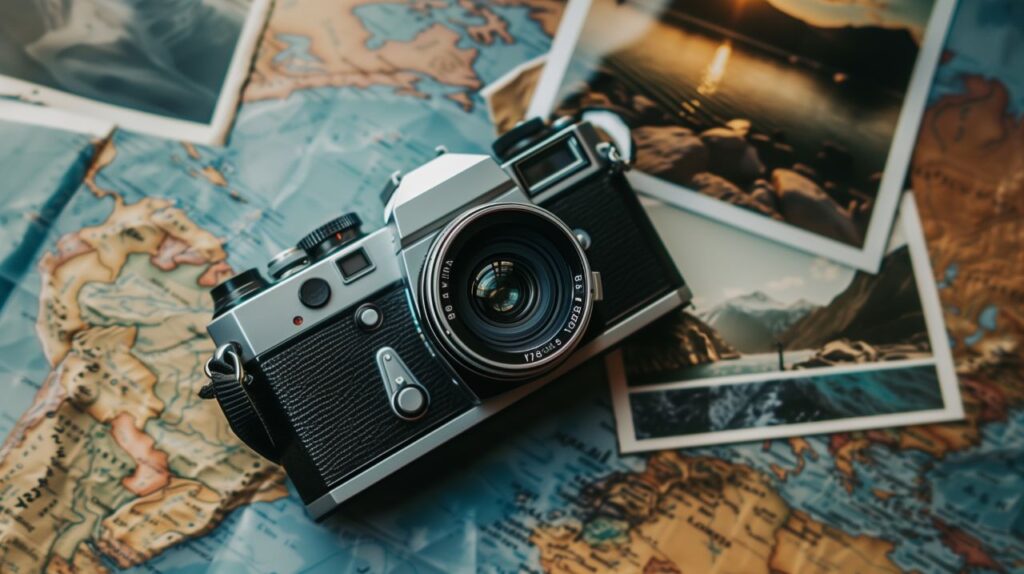
Travel photography has always been more than a casual hobby. It’s a way of pinning down experiences before they dissolve into memory. But pointing a lens at a landmark rarely does justice to the place, and even less to the moment. The difference between a forgettable snapshot and a photograph worth keeping often lies in the details – the way you frame, the time you shoot, the story you hint at. Understanding those nuances doesn’t require professional training, but it does require a shift in how you see and capture the world.
Why Does Travel Photography Matter?
At first glance, the answer seems obvious: people want to remember where they’ve been. Yet it goes deeper. A well-taken image can shape how someone recalls a trip years later. It can highlight textures – the cobblestones of a backstreet, the sharp light of a desert morning – or it can flatten them into something generic. Not only is travel photography a record, but it becomes a personal archive of perspective, colour, and mood.
And beyond memory, these images have a strange power: they influence how others imagine places they’ve never visited. A set of dull photos can make a breathtaking destination look uninspired. A handful of thoughtful shots can ignite someone’s desire to go.
How To Use Light To Your Advantage
Light is everything. Even the most remarkable subject falls flat without it. Midday sun tends to wash colours out, leaving harsh shadows that rarely flatter a scene. Early morning or late afternoon – what photographers call the golden hour – creates depth and warmth.
But it isn’t always possible to wait for perfect conditions. That’s where improvisation comes in. Overcast skies can be a gift, muting contrast and bringing out subtle details. Street lamps at dusk add atmosphere that midday brightness could never replicate. Maybe it’s about leaning into what’s available instead of wishing for ideal light.
Why Composition Shapes The Story
Framing isn’t about obeying rigid rules. The so-called rule of thirds – placing your subject off-centre – works often, but not always. Sometimes symmetry is exactly what a subject demands: think of a cathedral doorway or a mountain reflected in a lake.
The real skill lies in asking: what do I want this photo to say? A close crop of a traveller’s hands on a rail tells a very different story than a wide shot of the same person against a horizon. Not only is composition aesthetic, but it’s also narrative. It directs the eye, points to what matters, and leaves space for what doesn’t.
Should You Include People In The Frame?
There’s a tendency to avoid strangers in travel shots, as though they ‘ruin’ the picture. But sometimes, their presence gives scale and context. A single figure walking across sand dunes conveys vastness far better than an empty landscape. Even blurred silhouettes in city streets can animate the scene.
That said, the opposite can be powerful. A deserted square at dawn has its own energy – quiet, expectant. So the question isn’t whether to include people, but what their presence (or absence) adds to the frame.
How Gear Influences Results (Without Taking Over)
There’s no shortage of advice pushing bigger lenses, pricier cameras, or endless accessories. But the truth is straightforward: the best camera is the one you have when the moment arrives. Not only is carrying less equipment easier, but it often forces you to focus more on framing than fiddling with settings.
Of course, gear matters when pushed to extremes. A zoom lens makes capturing distant wildlife possible. A tripod stabilises night shots. Yet most travellers overestimate what they need. The essentials are fewer than people think.
- A versatile lens (or just a decent phone camera)
- A backup memory card or cloud storage
- Something steadying – a mini tripod, or even a wall to lean against
That list covers more scenarios than most expect.
What Role Does Editing Play?
Editing divides opinion. Some argue it ‘fakes’ the scene, others say it’s integral. Both have merit. The danger lies in overdoing it – oversaturated skies, faces smoothed until they lose all detail. Subtle adjustments, though, can bring a photo closer to how the moment actually felt.
Increasing contrast to highlight texture, adjusting warmth to mimic the light of dusk, cropping out distractions – all of these are editorial choices. They don’t replace the photograph, they refine it. Maybe the key is restraint: using editing to enhance, not distort.
Why Details Matter More Than Landmarks

Tourist spots are photographed so frequently they almost lose character. Yet shift your angle, and something changes. A side street near the Eiffel Tower, with its shadows and quiet doorways, might say more about Paris than the monument itself. Not only does focusing on detail create uniqueness, but it helps avoid clichés.
Think of textures: peeling paint on a fishing boat, the pattern of tiles in a market, or even the way light bounces off water at sunset. These fragments often carry more truth about a place than its postcard image.
When Travel Meets Personal Storytelling
Photography isn’t only about scenery; it becomes a narrative tool. Pairing images with writing deepens the memory. Some travellers choose to create a personal travel journal, combining words and photos into a single record. That combination allows for both detail and reflection – the immediate visual impact alongside the slower rhythm of text.
And then there are photos tied to larger adventures. An African wildlife trip demands a different approach than a European city break. Wide shots of savannah, close captures of animals in motion, moments at camp – all of these call for an awareness of both spectacle and intimacy. Each trip shapes its own visual language.
How To Practise Without Travelling
Strange as it sounds, the best preparation for travel photography may happen at home. Photographing familiar places sharpens your eye for angles and textures. A local park at sunrise or a crowded market can teach as much about timing, light, and framing as an exotic location.
And it reduces pressure. Mistakes made on a street corner close to home become lessons carried into far-off settings. That practice means when the real moment arrives – the one you can’t repeat – you’re ready.
Final Thoughts
Travel photos that resonate aren’t about flawless execution or expensive equipment. They’re about awareness – of light, of detail, of the story you want to tell. Not only is practice essential, but so is curiosity. Look longer at what seems ordinary, frame differently what everyone else frames the same way, and remember that sometimes restraint speaks louder than exaggeration. The journey will pass, but if you pay attention, the photographs will remain.

